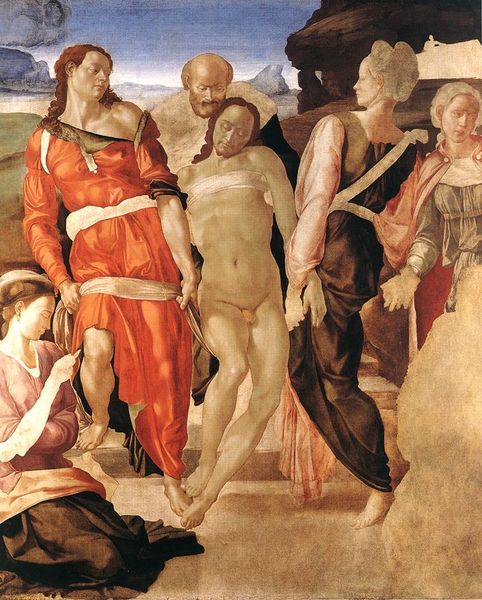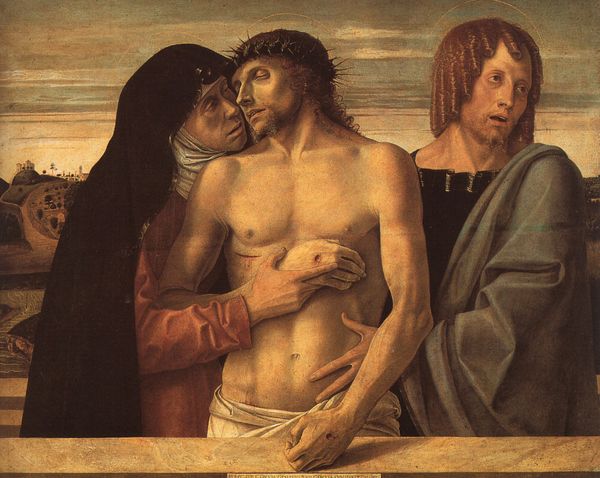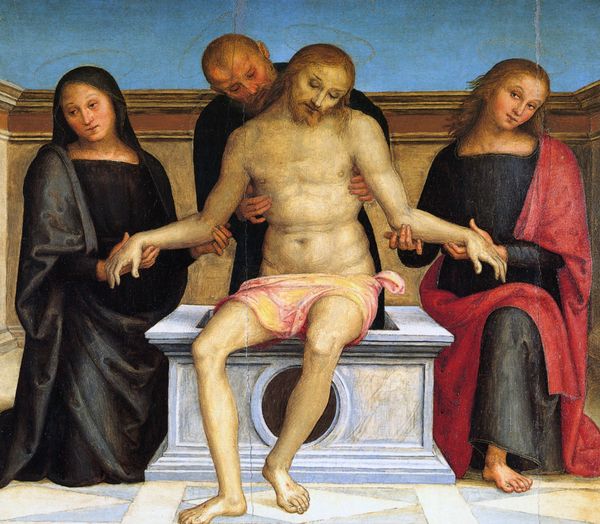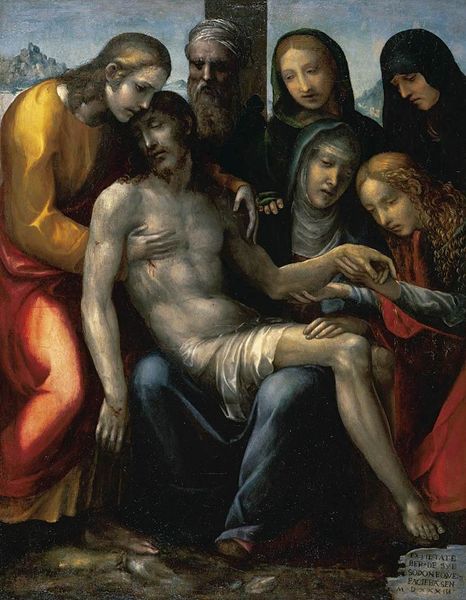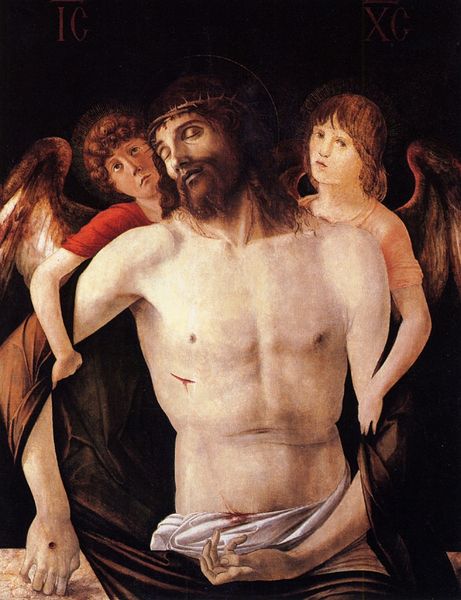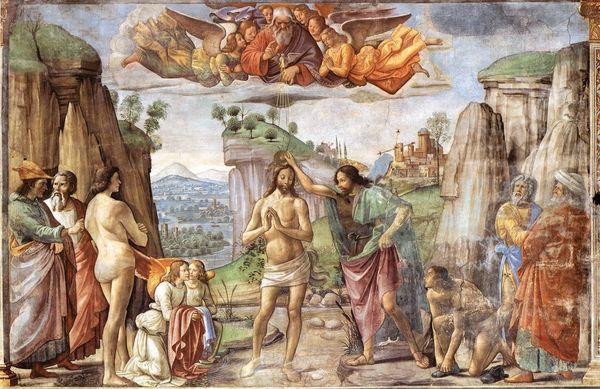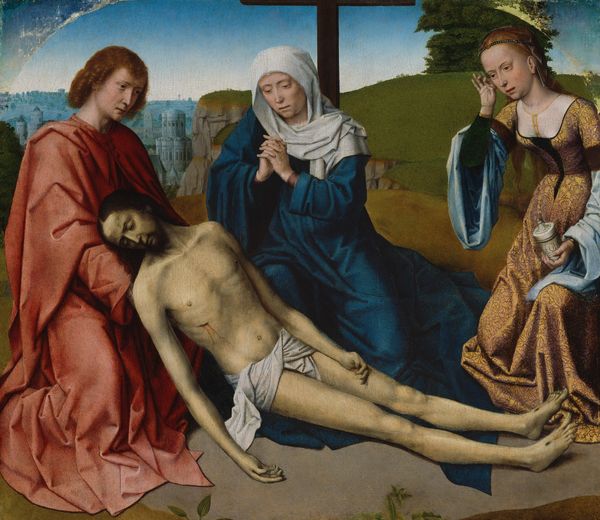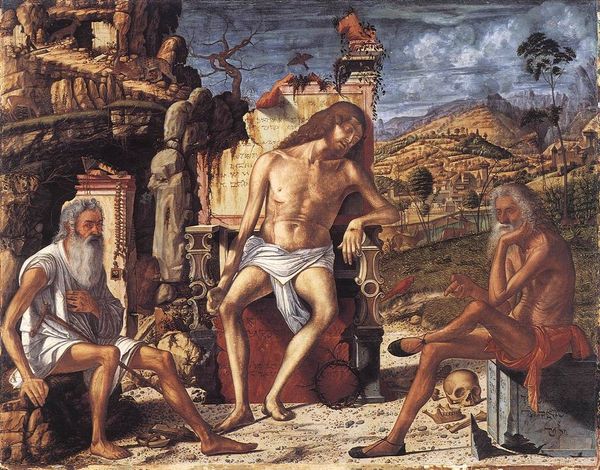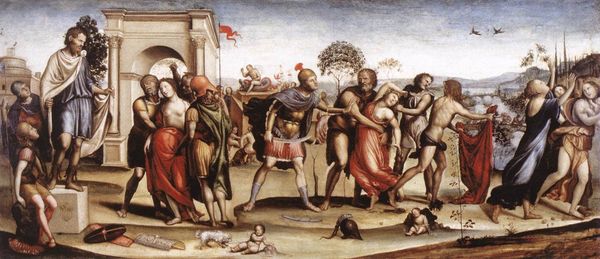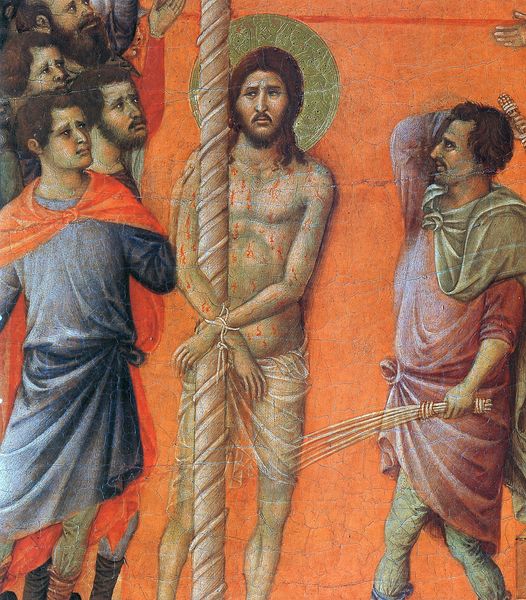
painting, oil-paint
#
painting
#
oil-paint
#
figuration
#
oil painting
#
history-painting
#
academic-art
#
italian-renaissance
Copyright: Public domain
Editor: This oil painting, "Flagellation of Christ," by Il Sodoma, created around 1510, certainly evokes a powerful emotional response. The composition, with its emphasis on the human figures and their stark contrast, strikes me as both theatrical and deeply unsettling. What are your initial thoughts on this work? Curator: Considering the inherent structure, we observe a compelling interplay of line and form. The artist has organized the composition with careful attention to spatial relationships. Note the orthogonality established through the architectural backdrop and the dynamic diagonals suggested by the figures' limbs. This creates a visual tension, further enhanced by the chiaroscuro, where light and shadow accentuate the figures' musculature and emotional states. Editor: So, it's about the tension and the play of light? Is there a deeper symbolic meaning to this arrangement, beyond the literal depiction of the flagellation? Curator: Symbolism, if present, remains secondary to the pure opticality and material facture. Look closely at how the artist applies paint – the textures, the brushstrokes, and the overall surface quality. This is where the essence of the artwork resides. The focus remains on aesthetic properties: How does it manipulate line, color and form? Editor: I see your point about the artist's technical skill. I guess I was expecting a more… historical or religious reading. Curator: Such external considerations might detract from our appreciation of the formal elements. It is not merely depicting a scene; it is the construction of a self-contained visual reality. Consider the balanced contrast. Does this painting's self-referential structure contribute something larger to our awareness of the aesthetic universe? Editor: That's a really interesting way to look at it, moving past the immediate subject matter to focus on the artist's technique. It really changes the way you understand it. Curator: Precisely. It offers an alternative reading that appreciates its internal logic, divorced from any immediate religious sentiment.
Comments
No comments
Be the first to comment and join the conversation on the ultimate creative platform.
